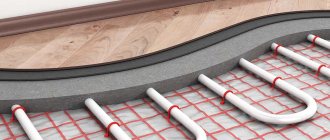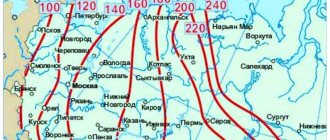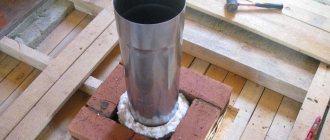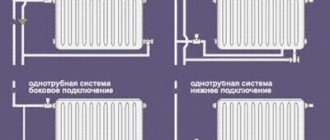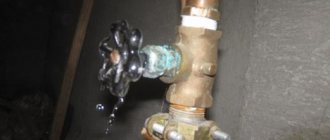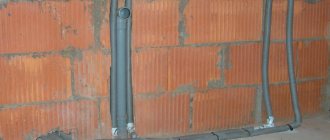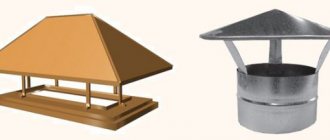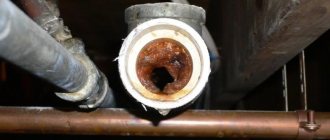Thermal insulation of heating system pipes, including external ones, is an important component of high-quality home heating equipment and is mandatory. The need for this operation is due to many factors, the degree of influence of which on the heating efficiency of an apartment or house depends on specific circumstances.
Modern technologies make it possible to insulate outdoor heating pipes yourself by studying the characteristics of the heat-insulating materials used and methods of their installation.
Functions of thermal insulation of external heating pipes
The purpose of a heat-insulating pipeline coating has several components that affect not only the efficiency of the heating system, but also the safety of its operation and the service life of the heating equipment. To make the requirements for insulating coatings clearer, let us consider in more detail the functions they perform.
Reduced heat loss
The efficiency of a home heating system depends on many factors, including the amount of heat loss. One of the components of the volume of heat loss is the release of part of the energy by the coolant into the transit medium when moving from the heat generator to the heat exchanger. Simply put, hot water or steam, moving through pipes from the heating boiler to the radiators, partially cools, giving off heat to the environment (air, wall material, soil, etc.) through the walls of the pipeline. And, the higher the thermal conductivity of the pipe material, the greater the heat loss will be. Therefore, the heating system pipeline needs an additional thermal insulation shell, which prevents heat exchange between the coolant and the environment through the pipe material.
Frost protection
During the off-season, due to some circumstances, there may be water in the heating system, which will damage the pipeline by freezing in the circuit while the boiler is inactive during the first frost. Thermal insulation of the pipeline will significantly slow down this process, keeping the water temperature in the system above zero for several days or even weeks.
Preventing the formation of water condensation
Thermal insulation of the pipeline will prevent the formation of condensation on it during temperature changes in the environment, if the heating system is not free of water, and this will protect the pipes from corrosion from the outside.
Protection against thermal burns due to direct contact with heat conductors
A shell made of thermal insulation material, by definition, cannot have a high temperature and will eliminate the possibility of getting a burn if the human body accidentally comes into contact with a hot pipeline.
Neutralization of geometric deformations
If the heating system is laid out inside building structures, the elastic shell of the pipeline will absorb the thermal deformations of the pipes and protect the external finishing of the walls from the effects of cyclic compression and expansion on it from the inside when the heating is turned on and off.
What do angiography indicators mean?
The amount of radiation that will penetrate the veins and other brain tissue is determined by their density. It is expressed in various color shades. The bone in the image will be white, and the cerebrospinal fluid will practically not appear on the resulting images. Other brain substances have different colors and densities. Using them, doctors evaluate the internal structure. The doctor will provide a detailed transcript of the received images.
Requirements for heat-insulating materials
*
Considering the importance of the role of thermal insulation for pipelines of heating systems, the need for its high-quality installation, due to the listed functions, the following requirements are imposed on thermal insulation materials, enshrined in SNiP 2.04.14-88 “Thermal insulation of equipment and pipelines”:
- low value of thermal conductivity is the determining condition for the suitability of the material to perform the main task (thermal insulation);
- sufficient heat resistance - the ability of a material to maintain its structure and physical characteristics in conditions of high temperatures (in everyday life - 105, in production - up to 700 degrees Celsius) temperatures, without reacting with contacted substances, without becoming a catalyst for any chemical processes and without releasing harmful substances.
- chemical resistance - the ability of a material to react stably to organic substances;
- sufficient hydrophobicity - water-repellent properties that prevent the thermal insulation layer from getting wet, since filling the pores of the material with water will make it an excellent heat conductor, which at the same time contributes to the destruction of the pipeline under the influence of corrosion;
- vapor permeability - the ability of insulation to dry quickly in the event of direct contact with water;
- airtightness - a characteristic that excludes the filling of the insulating material under the influence of wind with dust particles that increase thermal conductivity (all hard thermal insulation materials meet this requirement, soft ones require additional protection);
- durability - the material must meet all requirements throughout the entire shelf life specified in the instructions for use.
Foamed polyethylene
Polyethylene pipes of different diameters are highly resistant to external influences. The products have a special cut that makes pipeline installation easy.
The environmental safety of foamed polyethylene allows it to be used in residential buildings.
Polyurethane insulation can be divided into several types. They have different technical characteristics. In general, they are environmentally friendly materials.
Types of thermal insulation materials for pipelines
Based on their design, thermal insulation materials are divided into the following types:
- roll;
- sheet (in the form of mats);
- casing;
- liquid.
Rolled thermal insulation materials are a rolled strip of thermal insulation of a certain thickness and width, with or without a foil base.
Rolled thermal insulation is wound onto pipes in a spiral or (only in horizontal sections) laid longitudinally on the pipeline with the edges joining under the pipe and secured with clamps or wire. If the material is foil, then the thermal insulation is arranged with a layer of foil facing outward, but this does not provide sufficient protection of the material from precipitation, so the question arises of how to insulate the heating pipe outdoors from moisture. This problem is solved by installing metal protective casings made of galvanized iron on the pipeline over the foil material.
Sheet materials are used in the same way as rolled materials for longitudinal laying; the use of protective covers over them is also due to the need for protection from moisture and mechanical damage.
*
Casing thermal insulation can be hard or soft.
Solid heat-insulating materials of casing design are a hollow cylinder with a wall of a certain thickness, which has longitudinal cuts of a locking profile on two or four sides. The diameter of the cylinder cavity is made to fit a certain pipe size.
Soft materials for thermal insulation are a flexible casing with a wall of a given thickness, with or without a longitudinal section. A flexible heat-insulating sleeve without a cut is put on the pipe before its installation, and the cut allows you to insulate an existing pipeline.
Liquid materials for thermal insulation of pipelines on the street are divided into:
- sprayable;
- coloring.
The first type is applied using a special spray device, which gradually increases the layer of thermal insulation to the required amount.
The second type is used in the form of a layer applied with a regular paint roller or brush.
Each of the listed types of thermal insulation has varieties that differ in the material of manufacture, production technology, physical characteristics, price, etc., as manufacturers are constantly improving the properties of the insulating products they produce. The modern market, depending on the operating conditions of the pipeline, allows you to select a material that best meets the requirements of a specific situation.
Classification
Cardiomyopathies are divided into primary (idiopathic) without an established cause and secondary with a known etiology.
Primary cardiomyopathies
- genetic: hypertrophic cardiomyopathy;
- arrhythmogenic right ventricular cardiomyopathy;
- non-compact myocardium of the left ventricle;
- Lenegre's disease;
- ion channelopathies.
- mixed: dilated cardiomyopathy;
- primary restrictive cardiomyopathy;
- acquired: inflammatory cardiomyopathy;
- stress-induced cardiomyopathy (tako-tsubo syndrome);
- postpartum cardiomyopathy.
Secondary cardiomyopathies
The group of secondary cardiomyopathies is extensive and includes myocardial lesions in various diseases and pathological conditions. Among secondary cardiomyopathies, the most common are alcoholic cardiomyopathy, thyrotoxic cardiomyopathy, diabetic cardiomyopathy, autoimmune cardiomyopathy, etc.
Options for the location of the heating pipe on the street
*
During the construction of private housing, a situation arises when it is necessary not only to install and install a heating system in the premises of the building itself, but also to bring it to nearby residential or outbuildings.
The second situation is that the housing is connected to a nearby heating main, or an autonomous heating boiler is used, located in a separate building-boiler room.
In such cases, the installation of the pipeline between buildings is carried out in one of the following ways:
- open (aboveground);
- underground.
Each option for laying pipelines has both the principles of insulation production that are common to all situations, and the nuances of performing the work that are unique to it. Moreover, any method of installation and insulation of steel pipelines requires mandatory preliminary preparation of the surface of the pipes - cleaning and application of a protective anti-corrosion paint and varnish coating.
Open (aboveground) method
The open method of laying a pipeline implies its location on concrete or steel supports of a certain height, installed with a calculated pitch. Laying pipes directly on the ground is allowed only when constructing temporary mains.
When choosing a thermal insulation material in this case, it is necessary, in addition to the characteristics of the coolant, to be guided by the factor of pipeline accessibility in terms of the likelihood of accidental damage to the insulation. If the pipes are located on supports higher than human height, then they are more protected than a low-mounted pipeline accessible to humans and animals. Therefore, for pipes located at low heights, protective casings should be selected from galvanized metal of greater thickness.
Last but not least is the aesthetics of the installed thermal insulation, so it is not advisable to use roofing iron casings without a zinc coating for protection - they will need to be periodically coated with a protective paint layer.
Important!
If foam plastic shells, which are a flammable material, are used as pipeline insulation, then transverse gaps are created in the foam insulation, filled with non-flammable material, for example, mineral wool.
Underground method
This technology is divided into two subtypes:
- channel - the mounted pipeline is located underground in a sleeve that takes on the weight of the soil;
- channelless - pipes equipped with thermal insulation are placed directly into a dug trench.
The channel installation method significantly increases the cost of work and is almost never used in private homes.
The underground pipeline is laid below the freezing mark of the soil, and water-permeable materials (mineral wool) are not used to insulate the pipes, which, if flooded, can become saturated with water and lose their insulating properties.
Why do you need to insulate street communications?
It would seem that this is an unnecessary task. Well, let’s say the location of heating pipes in the open air, from the house to the boiler room, cannot be done otherwise. But they are always hot, so why also protect them from the cold?
In fact, thermal insulation of pipes on the street is simply necessary. The heat supplied through the main line is “lost” along the way in the cold. That is, the pipe will not freeze even in frost if hot liquid flows in it. But the output efficiency will decrease, and accordingly, energy consumption and, as a result, prices spent on heating will increase.
This is especially true for the hot water supply system. When insulating a pipe outdoors, the primary goal is to maintain the temperature. The same measures will not be superfluous for the main pipelines in the autonomous heating of the house.
Types of thermal insulation materials and methods of their use for insulating pipes on the street
*
The range of heat-insulating materials, despite the high requirements for their characteristics, is very wide today, so budget becomes the guiding criterion when choosing how to insulate the pipes of an outdoor heating system.
Foamed polyethylene
Polyethylene foam (PPE) is rightfully considered one of the most effective heat insulators, since its thermal conductivity is only 0.035 W/m2 deg. C is two times lower than that of mineral wool (0.07 W/m2 deg. C). This polyethylene is offered to the consumer in rolls, sheets and in the form of sleeves of various sizes.
The elastic bubble structure of PPE, when produced in rolls, makes it easier to perform insulation on shut-off valves and pipelines of complex configurations, as it allows you to cut the material into strips of the required width and wrap it around problem units. Polyethylene is water-vapor impermeable, so it is not only warm, but also a waterproofing coating.
The specific density of PPE, depending on the structure, is 32 – 35 kg/m3, so the thermal insulation shell made of it does not create significant loads on the pipeline and supports.
Despite the fact that polyethylene can be set on fire, its flammability is low (class G-2), and when ignited in the absence of additional sources of fire, polyethylene foam quickly goes out, while the substances it releases during combustion are slightly toxic.
For thermal insulation of straight pipeline sections, it is more convenient to use PPE sleeves (with or without a side cut), since winding pipes with rolled material with the necessary technological overlap requires additional strengthening of the insulating layer with knitting wire or clamps and does not look aesthetically pleasing.
With many advantages, the price of PPE is not high, which determines its high popularity among owners of private houses.
Penofol
This insulation is a type of PPE and differs from it by the presence on one side of a layer of foil, which is a reflector of heat waves, increasing the thermal insulation, as well as the hydrophobic properties of the shell.
Thermal insulation from penofol - foiled PPE is also produced in the form of rolls, sheets and cylindrical shells.
Important!
The use of foamed polyethylene and penofol is limited by the upper limit of the application temperature of 85 degrees. This value is sufficient for using materials on pipelines of an autonomous heating system, but a higher temperature of central heating pipelines worsens the characteristics of polyurethane foam and makes it unsuitable for use in these conditions.
Mineral wool and products based on it
*
Insulating external heating pipes with ordinary or foil-coated mineral wool, wrapping the line with a strip of this material and fixing it with knitting wire, is the oldest method of thermal insulation. But the popularity of this technology, due to the fairly high efficiency of its application and affordability of costs, is still high - the choice of mineral wool as an insulating material for large volumes of work is completely justified.
Mineral wool is produced in three varieties:
- glass wool;
- stone;
- slag.
The first two varieties meet most of the requirements for thermal insulation - they have low thermal conductivity, are neutral in relation to the insulated surface, are quite elastic, chemically resistant and fireproof. As for the slag variety of this material, the process of its manufacture causes the presence of residual acidity in such wool, which has a negative effect on steel pipelines - in this regard, the pipes have to be coated with a special paint, which negates the price advantage of slag wool.
However, all three types of mineral wool are water-permeable and hygroscopic to varying degrees, so insulation made from these materials must be protected with galvanized iron casings, which will also provide protection from mechanical damage.
Polyurethane foam thermal insulation
Polyurethane foam (PPU) in texture is made elastic (foam rubber), rigid and sprayable. Rigid and spray polyurethane foam is used as thermal insulation - an effective and functional insulating material, numbering more than 30 brands.
All brands of polyurethane foam are united by the following advantages:
- breathability;
- resistance to chemicals (higher than expanded polystyrene foam);
- low moisture absorption (good hydrophobicity).
Rigid polyurethane is produced in the form of a prefabricated shell-shell or cylinders with a mounting slot, having certain dimensions, with a foil-coated outer surface. The products are applied to the pipe and fixed with clamps, heat-resistant sealant or their own self-adhesive inner surface.
Pipes are also produced that already have thermal insulation made of polyurethane foam with a protective shell - the so-called pre-insulated ones, which are connected to each other by welding with subsequent insulation of only the welded joints.
Sprayed polyurethane foam is applied to the previously prepared surface of the pipeline using a special spray device in layers and, as it hardens, the thickness of the insulating layer is increased to the calculated value. To perform thermal insulation using this technology, special expensive equipment and protective clothing are required, so it is not used in domestic conditions.
Foam rubber
The raw material for this high-quality material is synthetic rubber, the production cost of which is much lower than the cost of natural material, but the quality characteristics are just as high.
Properties of foam rubber:
- high elasticity with a large margin of tensile strength;
- low specific density of the material – 40 – 80 kg/m3;
- high thermal insulation characteristics;
- no shrinkage during operation;
- low flammability;
- zero vapor and water resistance;
- chemical inertness.
Rubber thermal insulation is produced in the form of rolled material, sheets of a certain format and tube-sleeves for standard pipe sizes. When using foam rubber as insulation for heating pipes outdoors, it is necessary to use protective casings made of galvanized roofing iron, which will protect the material from dust contamination and mechanical damage, including vandalism.
The price range of rubber insulation, depending on the thickness and manufacturer, is quite wide and allows you to choose a material with an objective price/quality ratio.
Another question is how to improve the energy efficiency of a private home?
For example, if we take the insulation of an attic roof, which is in great demand in the real estate market, then we can name many more ways to save heat than just insulating walls, windows and floors.
Installing solar panels on the roof, your own gas boiler, wind turbines, as well as various heat pumps that use the heat of the earth, air and groundwater will allow you to completely refuse to pay utility bills.
Creating such a “smart home” becomes a profitable investment. Many enterprising owners even have the idea of thermal insulation of a house made of timber. And there is nothing very difficult about this, if you want, but in the end you will listen to the news about increasing housing and communal services tariffs without fear.
By using the latest technologies for home insulation, you will get a very economical and cozy home, in which even the most severe frosts will not be scary at all!
